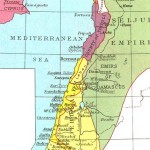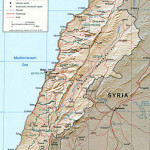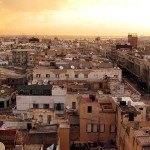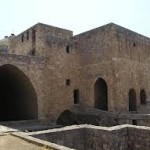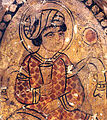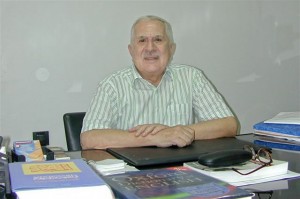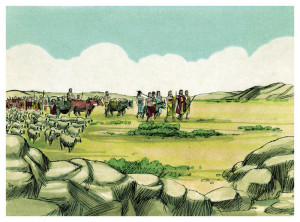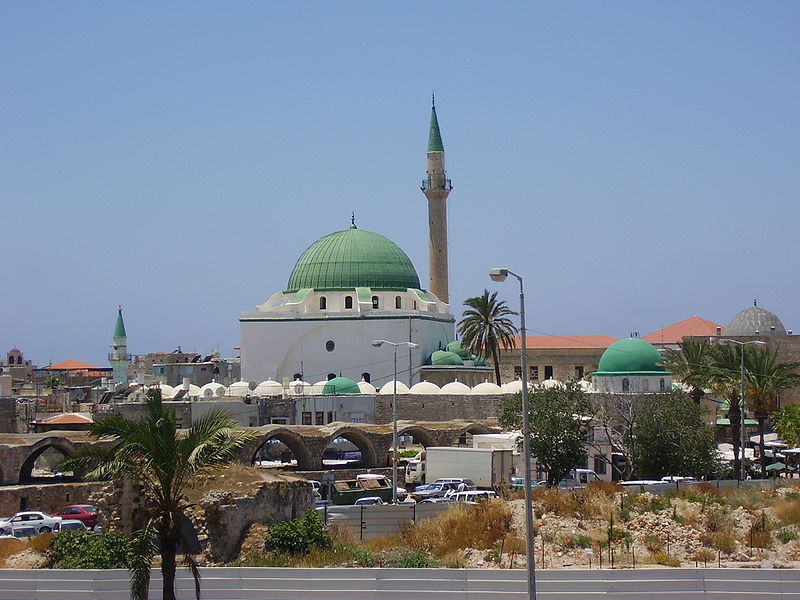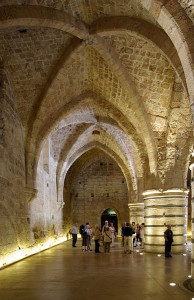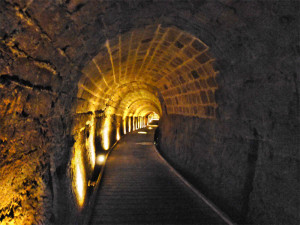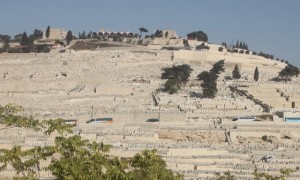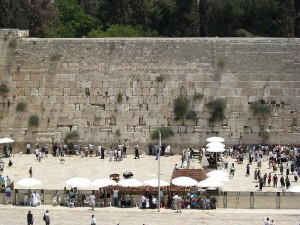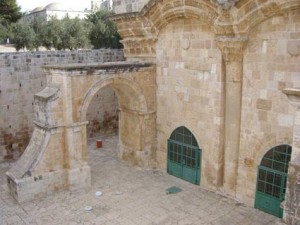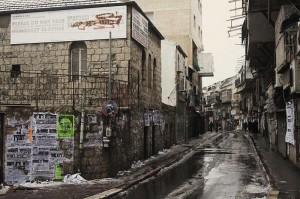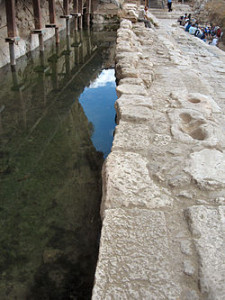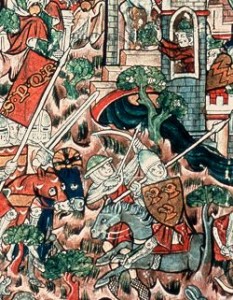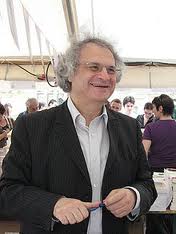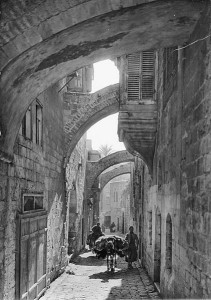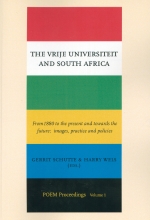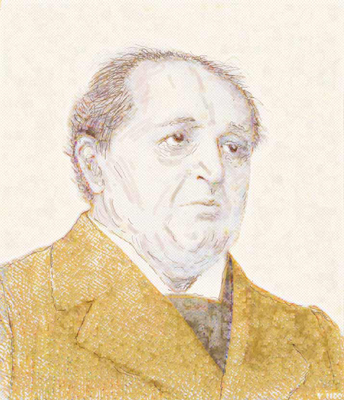
Abraham Kuyper
A smile of satisfaction must have appeared on Abraham Kuyper’s broad face while reading the letter that he had just received. It came from distant South Africa, and communicated congratulations from the governors of the Paarl Gymnasium on the opening of the Vrije Universiteit three months previously.
‘Devoted as we are to pure Reformed doctrine’, wrote chairman S.J. du Toit, ‘even at this southern outpost of the world, it gives us reason to glorify God’s holy name for placing this doctrine on the lamp stand through your work’.
Pious and hearty words, to which Kuyper could not but say ‘amen’. Besides, S.J. du Toit was not just anybody. Despite his youthfulness – he was not yet 34 years old, ten years younger than Kuyper himself – he was an extremely influential man in South Africa: he was a clergyman and author, founder of the Genootskap van Regte Afrikaners (1875), editor in chief of Di Patriot (1876) and founder of the Afrikaner Bond (1879). Everything pointed to the Afrikaners taking the lead in South Africa in the course of the following years, under the powerful leadership of this front man for the population of Hollandsch-Afrikanen at the Cape Colony. Moreover, Du Toit was Reformed, an opponent to liberalism in the NGK and in society in general, and an advocate for Christian schooling. In the letter of congratulation from Du Toit, therefore, Kuyper could read a declaration of support from a brother, a kindred spirit and an ally. The ‘Vrije Universiteit te Amsterdam’ was opened on 20 October 1880 with a splendid speech by Dr Abraham Kuyper, who had been newly inaugurated as professor of theology and the first rector of the university. He was then nearly 43 years old, editor-in-chief of the weekly church newspaper De Heraut and daily newspaper De Standaard, and chairman of the Anti-Revolutionary Party. He was the leader and chief ideologist of Calvinist orthodoxy in the Netherlands, both in the church and in politics. Kuyper’s speech was entitled ‘Souvereiniteit in eigen kring’ (The Principle of Sphere Sovereignty): the Vrije Universiteit would practise scholarship free from influence by either the state or the church, but in accordance with Reformed principles. According to Kuyper, this was because society consisted of many ‘life spheres’ which were not equal but were of equal value, each obeying its own law of life (levenswet), each free and independent, sovereign; scholarship was just one of the many spheres – but all were subject to the sovereignty of God. With this principle of sphere-sovereignty, Kuyper check-mated the principle of the all-powerful state, and declared the independence of free civil society, thus allowing the realisation of God’s sovereignty in every area of life.
Much as it was a typically Dutch product, Kuyper saw a wider-reaching future for the VU. Because ‘just like scholarship, the Reformed faith knows no national borders.’ Du Toit’s letter seemed to confirm this: ‘Believe us, we are following you with our interest, we are supporting you with our prayers, and we trust that many of South Africa’s sons will yet continue or complete their studies at the “Vrije Universiteit” and thus also bring over to us some of the fruits of this blessed Institution’. Du Toit continued by asking more concretely about the possibilities for South Africans to study at the VU, the recognition of their South African diplomas and their in-streaming into the curriculum.
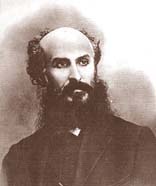
S.J. du Toit
Du Toit also drew Kuyper’s attention to South Africa in a much broader sense, however. In the letter (written on 3 January 1881), Du Toit also wrote: ‘Please also take note of our affairs. A war has now broken out in Transvaal, for which there is no end in sight. We (the Hollandsche Afrikaners) have from the very beginning prayed for help with our brothers from Transvaal, because they are being oppressed and are being done injustice. […] Would you be so kind as to use your influence to stimulate the Brothers in Holland to hold a day of prayer for Transvaal?’
Du Toit’s request was not even necessary. At the time that Kuyper received his letter, he was, besides being the rector and a professor at his university, at least as active as a journalist and politician, and already very much engaged with events in South Africa.
Kinship
The Netherlands had not really been too concerned about its descendants in South Africa after the Cape Colony was handed over to the British in 1806/1814. What happened there, far from the civilised world, between Brit, Boer and Bantu during the course of the nineteenth century was little known. Very little was known about the Great Trek and the Boer states of Natal, the Orange Free State and the Transvaal. People’s perceptions were largely shaped by the tales of missionaries, who were critical of the Afrikaners and their patriarchal attitude to the indigenous population. The latest news, of strong differences of opinion between the Transvaal Boers, also strengthened this negative perception. The progressive state president, Thomas Francois Burgers (a liberal and former minister who had studied in Utrecht) got nothing but uphill from his own people. No wonder that, out of desperation, he could do no more than protest verbally when England annexed the Transvaal in 1877.
This annexation was unavoidable, many Dutch thought at the time; and it was for the best for the Transvaal. After all, ‘a country that gave no rights to its non-white inhabitants [could] not possibly flourish’, was the harsh pronouncement by the Missions lecturer from Rotterdam, J.C. Neurdenburg. The annexation was ‘unfortunate and unfair, although not entirely undeserved’, in the opinion of Professor C.M. Kan, a geographer from Amsterdam. The protestation against the annexation published in 1877 by the professor of international law at Utrecht, G.W. Vreede, thus received little support or attention.
It was quite another matter, however, when, in the final weeks of 1880 and the first of the new year, the papers reported that the Transvaalers had rejected British rule and had reassumed their independence – and, having done so, had furthermore successfully defended it. Unanimously, the Dutch came out in support of that ‘little tribe, that the mighty Great Britain could purge out and chase away, but never overwhelm’. The news that ‘the Boers have stood up’ (as a local newspaper worded the general opinion) had barely arrived, when the history books were re-opened, and old memories rekindled. The enthusiasm amongst the Dutch for their kin in Africa grew by the day. Regardless of what may or may not have been true about earlier criticism, national sentiment and a sense of justice required the Dutch to firmly back their kin in the Transvaal.
The little country of the Netherlands, surrounded by the great powers of France, England and Germany, all competing with one another, had long doubted its own future. In Asia it was reminded daily that its colonies were entirely dependent on England: ‘perfidious Albion’, as school history books, full of Dutch-English sea battles from past centuries, called it. The uprising of the Transvaalers and their fearless actions caused a wave of enthusiasm in the Netherlands for these descendants of the Sea Beggars (‘Geuzen’) of the 16th century. The victories of the Boers – descendents of Oud Nederland and therefore kin – gave the Dutch self-confidence: faith in themselves and in the future. A clear nationalistic feeling arose across the full spectrum of the population. Excited dock workers in Amsterdam even spoke of boycotting English goods.
Abraham Kuyper shared the traditional, not very positive view held by the Dutch of the Boers in South Africa, and he was not motivated by any particular sympathy for the Transvaalers either, when in 1877 he wrote in De Standaard that the Netherlands should protest against the British annexation of the Transvaal, and that the Tweede Kamer (Lower House of parliament) should assume a motion ‘condemning every act of illegal occupation’. To him it was about the independence of the Netherlands, that, after all, found its highest guarantee in treaties and international law. When it comes to the Transvaal case, he wrote, ‘the other states will remember this cautiousness to our detriment’. Kuyper no longer believed in an independent Transvaal. He therefore barely paid attention to the delegations from the Transvaal that travelled to London in 1877 and 1878, and who also called at the Netherlands. South Africa would not leave Kuyper alone, however, and various articles in De Standaard testify to the fact that he was only provisionally finished with the country yet. The annexation meant a difficult dilemma for the Dutch, wrote De Standaard at the end of May 1877. ‘A sense of honour and national pride require the Netherlands to take steps in London on behalf of our Afrikaner brothers; but cautiousness and self-interest force the Dutch to resign themselves to the Boers’ fate’. Kuyper advised the Transvaalers not to carry out an armed revolt. Given the circumstances, this stood no chance of succeeding, and would certainly have resulted in much suffering. Simultaneously, he begged the British government to recognize that there were no valid legal grounds for the annexation. He also placed much emphasis on the rights of the Transvaalers to speak their own language, namely Dutch. Kuyper’s position clearly reflected his admiration for the liberal British opposition leader William Gladstone, who was expected to follow a more pro-Boer policy once he won the elections in 1880. The central role played by the Dutch language in all the articles further indicated that Kuyper was freely giving vent to the nationalistic sentiment that was current at the time.
During the course of 1880, Kuyper became more and more interested in South Africa. He came into contact with like-minded experts such as Frans Lion Cachet, who that year returned to the Netherlands after years of serving as a minister in South Africa and with G.J.T. Beelaerts van Blokland, who had old family ties with South Africa. He also had two meetings with S.J. du Toit.
In the second half of 1880, De Standaard followed developments in South Africa very closely. Already on 2 December 1880, it reported that the people of the Transvaal were going to give up on patient resistance. Indeed, from 8 December, a people’s congress gathered at Paardekraal, which was to solemnly declare the Transvaal’s independence on 16 December 1880. Kuyper was standing ready to support these kinsmen.
The leading article of De Standaard on New Year’s Eve of 1880 reported that Kuyper had since overcome all doubt. These kinsmen in the Transvaal had been unjustly ‘robbed of their independent national existence by the English’s lust for power and conquest’. Now they were following ‘the brave example of the heroes of ‘13 [the trio that freed the Netherlands from French rule in 1813] and, under Kruger’s rule, revolted against the invading pseudo-government’. This was no revolutionary act, wrote the anti-revolutionary leader, it was their inalienable right; they had simply done their duty. The English, after all, had ‘broken in as tyrants, and only stopped for a moment before the might of carbines and artillery’. Further, the Transvaalers had not resigned themselves to being annexed for one minute after 1876, unlike ‘the non-Transvaaler, who came from elsewhere, that modern preacher Burgers, Knight Grand Cross of the Order of the Dutch Lion’.
Kuyper thus placed himself firmly behind the Transvaalers, and quickly became one of the leaders of the pro-Boer movement in the Netherlands. He became co-founder and an influential committee member of the Nederlands Zuid-Afrikaanse Vereniging (NZAV, Dutch-South-African Society), which was founded on 11 May 1881.
Shortly after the founding of the NZAV, Kuyper hinted here and there that he wished to pay a visit to South Africa. A personal acquaintance with the country and the people was attractive for a number of reasons. His theological and church-political views were also much discussed in the churches of Dutch origin in South Africa. They even seemed to be gaining in support and influence. Liberal opponents sneered that Kuyper was planning to ‘make the Transvaal into a theocratic state’. Others – and not only those who were like-minded – actually asked for Kuyper’s help:
You and your [orthodox-Protestant] friends can help here. A new nation is being born here, that will resist the insufferable monotony of English civilisation, and will anyhow deliver South Africa from the Yankee type that appears to be about to flood the world; a nation that speaks Dutch, albeit with an African pronunciation.
The man who wrote this was certainly no admirer or follower of Kuyper. Dr E.J.P. Jorissen was a liberal minister who had abandoned his faith and office and had sought to build up a new existence in the Transvaal; in 1879/80, he had served as secretary to the triumvirate who led the rebellion. ‘Your Vrije Universiteit’, wrote Jorissen, ‘can become the theological seminary of Afrikaans theologians and jurists’.
Given the means of travel of the day, a visit to the Transvaal could easily require four or five months. Evidently Kuyper thought that De Standaard and the Vrije Universiteit could miss him for that long. Naturally he could regularly send copy, and in those days the academic year included a lecture-free period of several months, and began very late in the year. The daily routine as editor-in-chief and rector could be taken over by others while he was away.
Kuyper may have been the founder of the VU, its standard bearer and most important professor, but he was not the one in charge there. The Board of Governors of the VU met on 10 June 1881. The minutes noted:
The chairman wishes to inform the rector that an absence of at least four months, as such a journey would require, would be detrimental to the welfare of the university in its present state.
Kuyper was not permitted to travel to the Transvaal; and he acquiesced to the governors’ wishes, and did not travel to South Africa.
Principles
On 5 April 1882, Rev. Frans Lion Cachet wrote to Kuyper, ‘Have you read Du Toit’s programme thoroughly? […] England will lose South Africa or the Afrikaners perish for good’. Indeed there was every reason to study the ‘Program van Beginselen van den Afrikaner Bond’ (Programme of Principles for the Afrikaner Bond) very carefully.
Du Toit had recently started becoming an increasingly interesting contact to Kuyper. In a letter dated 3 August 1881, Du Toit reported to him that the Transvaal government had asked him to become superintendent of education there. He had hesitated for a long time before accepting the appointment. After all, it would imply giving up his ministry, the editorial of Di Patriot and his role in Cape society. It was only at the end of September 1881 that he finally accepted the post, because he had ‘in fact been entrusted with the youth and thus with the future of the Transvaal’, as he wrote to Kuyper. He was a convicted proponent of Christian education, and here he was being given the chance to develop an educational system in this mould. Besides, as he wrote to Kuyper at the end of November 1881, ‘Dr Jorissen was standing ready to push through a modern one’.
This selfsame Jorissen had (incidentally along with the president of the Orange Free State, J.H. Brand) also botched the negotiations at the Pretoria Convention, Du Toit told Kuyper in the same letter. With wise policy, however, he added, there was still hope of a better outcome (after all, the convention was provisional, a final treaty on the Transvaal’s independence would have to be drawn up later). It is quite clear that Du Toit had himself in mind for the role of minister of that wise policy, in full confidence that he would become the most important adviser to the Driemanschap and the intellectual leader of the young Republic of the Transvaal.
As a kind of advance on his future position (he only stepped into office on 13 March 1882), Du Toit asked for Kuyper’s cooperation in obtaining suitable school books (which Kuyper promptly sent through the NZAV). Du Toit also promised to ‘rather address our negotiations with Holland to you, than officially to the Committee [i.e. the executive committee of the NZAV]’. This was in response to a request by Kuyper, who was attempting to channel all contact between the NZAV and the Transvaal via himself and a few like-minded Reformed associates – to prevent the Netherlands from exporting ‘liberal civilisation’ and ‘modern’ emigrants to the Transvaal. S.J. Du Toit had also warned against this danger: the country needed good immigrants, ‘but please no modern ones. The Boers are still real Reformed folk’. Du Toit held his farewell sermon on 22 January 1882 before the Northern-Paarl congregation, and while still on his way from the Cape to the Transvaal (and to his new job as superintendent of education for the South African Republic), he sent a political programme to Di Patriot, with a request for its publication. On 1 March, representatives of various Afrikaner organisations would meet to talk about unification and to establish a new political organisation under the banner of the Afrikaner Bond, which had been founded by Du Toit in 1879. According to Du Toit, the Afrikaner party needed to have ‘a clearly stated Programme of political principles, so that friend and foe may find out what they want to know’.
In his cover letter to Di Patriot, Du Toit freely conceded that his programme was not original. He had ‘used the Programme of the anti-revolutionary or Christian-historical party in the Netherlands, adapted to our circumstances, because it is drawn-up in such a competent manner, and the essence of our national character has much in common with the Dutch people’. In mid-1882, he also wrote to Kuyper himself, ‘I have adapted your “Ons Program” for South Africa, made it “Ours”‘. To this he added, in reference to the debate within the NZAV about the relationship between the Netherlands and South Africa: ‘My main objective is: connection between the greater part of the Dutch and the South African populations’. Also the commentary on the programme that Di Patriot requested (and that was only completed in February 1884), would be written ‘making use of [Kuyper’s] commentary, naturally’.
Historians have drawn far-reaching conclusions about this acknowledged fidelity of Du Toit’s Program to Abraham Kuyper. Du Toit is said to have introduced the Afrikaners to neo-Calvinism, and that this then also became the ideological basis for Afrikaner nationalism, because ‘this neo-Calvinism was clearly tailored to fit Nationalist Afrikaner prejudices’. Also supporters of the policy of separate development later called it a result of neo-Calvinist thought, and in particular of Kuyper’s notion of sphere sovereignty. However, the decisiveness with which these conclusions were drawn was not proportional to the attention that was given to studying Kuyper and Du Toit’s political programmes. Did they actually have the same message and function? Was Du Toit actually a slavish follower of Kuyper?
Approximately half of Du Toit’s Program van Beginselen (Programme of Principles) was indeed copied word-for-word from Kuyper; firstly concerning the articles on the characteristics and foundation of Christian politics, i.e. the authority of God and His ordinances with regard to politics and obedience by the government to these ordinances; and secondly, those articles that dealt with the task and functioning of a Christian government (including how it is to be distinct from the church). Further, there were also a few articles on a number of important derived principles: on education (neutral, public education as a supplement to confession-based education), on jurisdiction, the maintaining of public decency, public health, financial policy and taxation.
More succinctly worded than in Kuyper’s Program, but identical with regard to content, were the articles explicitly forbidding the state from interfering in internal church affairs, and on the autonomy of the party. All these articles expressed the main ideas of anti-revolutionary politics, a strongly normative political philosophy. As Davenport indicates in his standard work on the history of the Afrikaner Bond, this made Du Toit’s Program unprecedented in South Africa. With regard to contents, however, Davenport shows little appreciation for Du Toit’s ‘flights of fancy’: his Program ‘disclose[d] a theocratic view of the relations between Church and State, and a doctrine of divine sovereignty which left no room for a sovereign legislature or even a sovereign people and regarded existing political authorities as divinely ordained’. Davenport clearly read the Du Toit/Kuyper text without taking Kuyper’s actual political development into account. Kuyper did indeed recognise God’s sovereignty in the political sphere, but principles such as sphere sovereignty and ‘the church as an organism’ did not imply a ‘theocratic view of the relations between Church and State’; on the contrary, Kuyper would have understood nothing of a sentence such as that cited above. You cannot have politics without transcendence, he stated repeatedly, but this does not mean that people have no responsibility as citizens. Kuyper was a democrat.
What actually made Du Toit’s Program really startling and challenging, was that he linked this anti-revolutionary political vision to his deepest political ideal, namely the Afrikaner identity and its destiny, ‘a united South Africa, under its own flag’. From the very first article, Du Toit made clear what kind of changes his programme had in mind for South Africa:
The national party represents the essence of our national character in South Africa, as it was formed by the transplantation and development of a colonisation by Europeans, mainly Dutch and Huguenots, on African soil; and desires to develop this in accordance with the needs of our times.
This would not be by means of ‘the principle of a lawless people’s sovereignty’ – this was rejected by Du Toit as well as Kuyper, since God is the only source of sovereign authority – but, he also added, ‘[we also reject] all unlawful foreign rule’, words that did not lose their threatening tone when in the second half of the article Du Toit calls the existing division of South Africa, including ‘the British sovereignty [in the Cape Colony and Natal] that has become an historical way through divine providence’. Because
... the Republican Form of Government [too] [is] rooted in history as being under God’s guidance, developed by the Emigrant Boers, recognised by British Treaties, and confirmed as such by the Constitution of both Republics [the Orange Free State and Transvaal].
However, to all these forms of government the basic rule from article VI applied:
The national party, disapproving of the idea that only one form of state can be the only right one, and obedient to the present one, believes that the final purpose of our national development is a united South Africa, under its own flag.
The truth was out: South Africa was to be for the Afrikaners. The words are Kuyper’s, virtually article by article, but their contextual meaning and application are Du Toit’s.
Like most people in the nineteenth century, Kuyper was a nationalist. As an organic thinker, he contrasted the concepts of ‘nation’ and ‘state’. A nation was an organism, but the state was just a construction, said Kuyper. Nations were not immutable, they did not exist in and of themselves, and did not even appear to be the highest form of social development: ‘Out of the family, the extended family naturally develops, and out of this again the tribe; and there is no imaginable reason not to believe that out of these a nation and the world [of nations] could have developed’. The United States of America showed that a new nation could arise from very different groups of people. In that context, not even ‘physical origins’ (race) formed a significant obstacle. Kuyper’s worldview was based on a multitude of independent national identities, all of equal value; his political philosophy claimed universality.
Kuyper was therefore a moderate nationalist. He always accepted the small Dutch state to be the given context in which he acted. The nation was therefore not central to his thinking. ‘Sovereign authority flows from God Almighty to all parts of His creation’, he wrote in Ons Program. In naming the various organic spheres, he skips the nation and jumps straight from societies in villages and cities to the state. The state meant far more to Kuyper than the nation – but then as a necessary evil, a makeshift measure. The state was ‘a surgical dressing made necessary by sin’, Kuyper postulated as the rebellious leader of a minority in the liberal Dutch state, thereby recognizing his greatest opponent. His principle of sphere sovereignty implied a fundamental attack on state power. In opposition to the state, he placed not the nation, but the freedom of the various sectors of the population. Central to his thought was the ‘re-Christening’ of Dutch society. Yet not the nation, but the church (the church as an organism, so the Christian organisations), i.e. the Christian sector of the population, was to bring healing.
Kuyper thus also accepted the differentiation and the pillarisation of the Netherlands. He openly acknowledged that ‘three national tendencies wrestle in the bosom of the Dutch nation’. Against the Catholic and the revolutionary (liberal), his Program represented the anti-revolutionary side. In comparison to the other two basic types, it was ‘the most richly developed, the one that has broken out the most dazzlingly, ripened into nationhood in every sense’, and thus the essence of the nation.
However, when Du Toit used these same words (‘The national party represents the essence of our national character’), they came to mean something completely different. They form the opening sentence of his programme, and they preach revolution and rebellion; in 1880, there was no such thing as an Afrikaner people, never mind an Afrikaner state. Du Toit proclaimed a new creation. It was about ‘the forming of a unique South African national identity’. After all, Afrikaners were not Dutch, French, German or English; it was not England that was their ‘home’, nor was Holland, France or Germany their native country – it was South Africa. It was simply the restatement of a line from a song from a few years previously: ‘Ider nasi het zijn land’ (‘Every nation has its country’) – the same political desire that was considered to be a universal law and a reality yet to be realised.
Naturally, there were people with a different view in South Africa too, Du Toit acknowledged. They were for instance followers of the ‘Jingo Party, that only wants to use South Africa as a conquered territory or milch cow to England, and want nothing better than the oppression and destruction of our nationhood’. Or they were in agreement with the party in the centre, ‘that does desire some political freedoms, but still head-shakingly rejects the idea of forming an own nationality as an unachievable ideal, or place it in the distant future’. All this was unacceptable to Du Toit, however. They were neither Dutch nor English, but Afrikaners, as history had proven – and history was written by God’s hand, as even the most liberal mind knew.
‘We do not allow foreign morals to be forced on us, we want to grow and develop, but then only on our own land; we want progress and we want to complete our state-building, but only in accordance with our national character.’ Hence, in Du Toit’s view, a true Afrikaner Bond would seek strengthening of national independence ‘in the recognition, preservation and use of our national language; in the education of our neglected farming population; in the promotion of knowledge of our history; in the nurturing of a sense of freedom and patriotism in our population, especially amongst the youth’.
National independence was a cherished ideal in the nineteenth century. Ensuring good care for ‘de doode en levende strijdkrachten’ (dead and living war resources – Kuyper’s way of describing material and manpower in the army) received an adequate local translation by Du Toit with the demand for an efficient civil guard. Du Toit followed Kuyper wholeheartedly, in the knowledge that at the end of the day, independence was not dependent on the material, but on the moral strength of a nation.
Comparing this with the corresponding article in Kuyper’s Program shows how differently Du Toit and Kuyper worked this out. Kuyper sought strength for the preservation of national independence ‘in the strengthening of awareness of the law; in the promotion of knowledge of our history; in the confirmation of our people’s freedoms, in an experienced diplomacy’. Kuyper wanted the christening, the moral arming of the nation – hence also his plea for its instruction in an epic version of the country’s history that could inspire the people, offer a sense of unity and teach dependence on God.
For Du Toit it was all about the forming of an Afrikaner nation, its own language, its identity, patriotism, and sense of freedom. Promoting the history of the people was to him a question of nurturing ‘knowledge of the battle of their fathers against oppression and violence, and for justice and freedom’. Du Toit repeated here what he had written in Die geskiedenis van Ons Land in die Taal van Ons Volk (The History of Our Country in the Language of Our People). This book, published in 1877, was the first to give ‘a common background to the Afrikaners in the Republics and the Colonies’, wrote F.A. van Jaarsveld; and further:
In the ‘national’ history, Afrikaans speakers throughout South Africa are intrinsically united. The contents boils down to the battle between Boer and Brit, […] an exposure of the British way of behaving […] emotionally charged, […] nationalistic, with the aim ‘to acquaint our children from an early age with what their forefathers have already endured and suffered in this land where foreigners now wish to trample us’.
In his Program van beginselen, Du Toit continued in a similar vein. ‘A genuine national, patriotic “A History of South Africa, for use in schools” is thus also urgently needed’.
At one point in his commentary on his Program van de Nationale Partij, Du Toit conceded that ‘we are making an opposite choice to our Dutch anti-revolutionary friends’:
For the improvement of conditions and for the tempering of the existing injustice, over there they are asking (in contrast to the liberals), for a reduction in the census; and we over here, in contrast to the Phillippians and equality crowd, for a raising of the census.
Du Toit’s commitment with his proposal to limit suffrage was once again the independence of the (Afrikaner) nation, which was under threat due to social differences and discrepancies. The English, the ‘Jingoes’, were, after all, in the habit during election time of stirring up the non-white voters against the national party. The constitution of the population in the Cape voting legislature would unavoidably lead to dominance by the non-white majority, according to Du Toit. The best would be, he thought, to end equality at the ballot box completely, but in the meantime increasing suffrage could exclude ‘the lowest riff-raff and kantienvolk‘ – as well as the poor whites and immigrants (‘foreign fortune-seekers’).
It does not take much imagination to see that Du Toit shared the social and racial prejudices of his time and his environment. The second-last article in his Program also demonstrates this. Here, mention is made of ‘native tribes under their own chiefs’, incidentally to be distinguished from ‘the single [i.e. not living in tribal context] coloured workers, living dispersed among us’. In this regard Du Toit called for a consistent policy to be developed and implemented throughout South Africa, without interference from London. The point of departure was to be that: ‘For the development and prosperity of South Africa, it is essential that the more civilized and developed minority not be dominated by the greater majority of full-blooded or half-blooded barbarian natives’. No voting rights for ‘natives’ and ‘coloureds’, therefore, ‘at least due to the present immature condition in which they find themselves’.
It is clear that with this article, Du Toit was attempting to remove a very concrete stumbling block that – given the political differences in South Africa in 1882 – prevented any kind of unity. Frans Lion Cachet, who had lived in Southern Africa for many years, immediately saw it, and told Kuyper: ‘The article on equality is very carefully formulated’.
By this he would first and foremost have meant the common denominator that Du Toit had found for action concerning the whole of South Africa, both colonial and republican: rejection of the imperial factor. However, that same judgement also applied to the subordinate clause in the stipulation, which withdrew the right to vote from non-whites, i.e. ‘at least due to the present immature condition in which they find themselves’. After all, this subordinate clause expressed both sides, ideal and reality, in terms of which the West experienced its superiority at the time.
Kuyper was at least as much a product of his times and his environment as Du Toit was, and he too considered European colonialism to be a beneficial development. Much can be said about Kuyper’s prescription of a colonial policy bound to a moral obligation, and it is clear that he did not rise above the colonial mentality of his time. Yet he did mention a political and moral obligation towards those colonised and free preaching of the Gospel, while there were no such idealistic terms in Du Toit’s writings. He expected the development of black Africa, but nowhere in his Program is there a call to stimulate this development.
At its founding congress in Graaff-Reinet on the first of March 1882, the Afrikaner Bond had neither the time nor the desire to discuss Du Toit’s Program. It was distributed for private study, and nobody ever came back to it, notes Davenport in his history of the Afrikaner Bond. Kuyper’s anti-revolutionary politico-social programme never found expression within the Afrikaner Bond.
Continued cooperation
In a letter dated 6 Augustus 1883, Du Toit asked Kuyper to come to London, as the Transvaal delegation (President Kruger, General N.J. Smit and Du Toit himself) would be conducting negotiations with the British government there from the end of October. ‘Your presence, if at all possible (a week would be sufficient) would be most pleasant and a great support to us’, he wrote.
Kuyper accepted the invitation, despite all the differences in opinion that had arisen in the interim. His contribution was to consist mainly of the publication of news and commentary in De Standaard. Kuyper was only in London for two weeks at the start of the discussions, at the beginning of November 1883; he could not honour repeated calls by Du Toit to once again cross the North Sea, as he had too much work and was also ill for a time.
A part of his stay in London was spent writing an Address to the Members of the Anti-Slavery and Aborigines Protection Societies, which was to form an important part of the delegation’s publicity campaign.
This was prompted by the refusal by the Lord Mayor of London (also a member of parliament), to receive the Transvaal delegation. When addressed on this refusal by the Transvaal Independence Committee, he wrote – on stationery of the Aborigines Protection Society! – that he did not wish to shake hands with representatives of a republic to which the words applied, ‘Its infant lips were stained with blood; its whole existence has been a series of rapacity, cruelty, and murder’. This image of the Boers as slave owners and cruel masters was widespread in England, and the ‘negrophiles’, as Du Toit called them, had considerable influence on public opinion and the Colonial Office. With regard to the Transvaal question, England’s imperial ambitions happened to correspond well with the philanthropic factor. Warnings were then also received from organisations such as the London Missionary Society and the Aborigines Protection Society not to forget England’s role as a protector of black Africans from the racist Boers. It is therefore quite understandable that the delegation wanted to counter this influence as much as possible. Kuyper’s Address, written on behalf of the members of the delegation and dated 12 November 1883, appeared in The Times on 13 November, as well as in the form of a separate publication.
The Address demonstrates Kuyper’s qualities as a writer and propagandist. It also shows that he had fully assimilated the new image of the Boers as pioneers of civilisation in black Africa, an image that had originated less than two years previously with the Transvaal uprising of December 1880 (at least in the Netherlands). According to this perception of the Boers, they were victims of a radical liberal theology of equality, and of British colonial hubris. Kuyper proved to be unmistakably influenced by the argumentation of the Dutch pro-Boer authors P.J. Veth, R. Fruin and in particular Lion Cachet’s Worstelstrijd der Transvalers (The Struggle of the Transvaalers). After all, no nation, wrote Lion Cachet, has in the last few years been ‘so incorrectly judged as the Boers from the Transvaal. No heart was shown for their suffering, no eye for their future, no comprehension for their meaning […]. In religious circles they were abused as oppressors of Kaffirs and Hottentots; in the world they were mocked as some kind of white Kaffirs’- and yet they were ‘the pioneers of civilisation in South Africa’, pioneers ‘so that Africa [may be] civilised and the heathen nations won for Christendom’.
In the Address, aimed at an international public, Kuyper thus continued the dispute with the missionary friends and their prejudice in favour of the blacks and against the Boers which he had already been conducting in De Standaard for a number of years, based on Lion Cachet’s information and writings. Without for a moment abandoning the view that all men are equal, Kuyper wanted simultaneously to do justice to the differences in development between nations and races; to him, the superiority of Christendom and civilisation were unquestionable benchmarks in this connection. Kuyper’s high moral argument hinges on the sentence in which he launches into his political attack: the organisations who were being attacked – alas! – did not always succeed in realising their salutary influence in Africa either. That could make them humble and oblige them to acknowledge the undeniable fact that ‘various methods exist for civilising the natives’.
The Address began by aiming over the heads of the members of the Anti-Slavery and Aborigines Protection Societies to ‘the Christian public of Great Britain in general’. After all, some people in England believed that ‘the Transvaal Christians [understood] less thoroughly than Christians in [that] country the duty which they owe[d] towards Indians, Negroes, Kaffirs, or any other coloured race or nation’.
‘We are sometimes even accused’, the members of the Boer delegation continued (in Kuyper’s words), ‘not only [of] keep[ing] the natives in a degrading position, but also [of] encroach[ing] upon their personal liberty and oppos[ing] their conversion to Christianity, yea, even that we have made ourselves guilty of the most horrible atrocities against their women and children’.
But nothing was further from the truth, wrote Kuyper in their defence, as a number of examples proved: when the Boers arrived in the Transvaal, there were just 20,000 natives, impoverished people who cowered in holes and caves and lived in constant fear of attack by neighbouring tribes, who stole their livestock and murdered their women and children. Now there were 700,000, happy with the Transvaal legislature, which in many respects was ‘exemplary’. After all, the Transvaal government had ruled against polygamy, forbidden the trade in slaves, strictly regulated the registering [‘inboeking’] of children, and had rescued a considerable number of black children who would otherwise have lived a miserable life. Assault of natives was punished, and female natives were not the victims of fleshly desires, unlike in many other colonies; all soldiers – including native auxiliaries – were to adhere to the rules of engagement as used by civilised nations; and the government was preparing measures for the extension of mission work to the natives.
At the beginning of January 1884, Du Toit wrote in a letter to Kuyper that he believed that the publication of the Address had had a positive effect. It had ‘prevented much writing in the newspapers about the Native question’. But in the same letter, he asked for Kuyper’s help in a sequel: a strong appeal to the Christian public, presented as a plea for the poor Kaffirs and against their errant advocates. Would he not like to come over again for a few days for this purpose?
Du Toit had already brought up the writing of another defence, because, ‘The Negrophiles continue to make mischief’ and their influence on the Colonial Office was noticeable. Kuyper could not come over, however, and a second Address never materialised.
Cooled fraternity
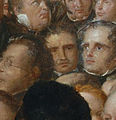
The Anti-Slavery Society Convention
On 27 February 1884, the London Convention was signed; on the 28th, the members of the delegation left for a visit to the Netherlands, where they received a hero’s welcome. A ‘vast crowd’ welcomed them on arrival in Rotterdam. They made a carriage tour of the city, the mayor gave a welcoming speech, followed by enthusiastic applause. From there, they travelled in a special train to The Hague, where the party continued, with days full of receptions, soirées and dinner engagements. Ministers, MPs, high-ranking officials, diplomats – everyone wanted to pay their respects. Prince Alexander hosted a meal and King William III and Queen Emma gave the Afrikaners a special audience. On 6 March, they left the Hotel des Indes in The Hague to go to Amsterdam. There the now familiar ritual was repeated. The delegation stayed in the Netherlands until 17 April; and wherever they went, the Dutch people cheered.
It goes without saying that Kuyper played an important role in the reception that the delegation received. He even played a leading role in Amsterdam. He booked their hotel, was on the welcoming committee, his daughter Johanna was one of the four girls who welcomed the delegation with a bouquet of flowers, and his son Herman, who was studying at the VU (and who twenty years later would act as thesis supervisor to Du Toit’s son), was appointed as their messenger boy. Kuyper too gave a soirée, followed by a dinner hosted by ‘his’ VU students.
One of the highlights of the delegation’s stay in Amsterdam was the meeting held on 11 March 1884, convened by the labour movement Patrimonium, where Kuyper was the speaker.
The great hall of the [building] Plancius, richly decorated with flags and greenery, with shields and trophies, was filled to the brim with men and women, their faces radiating grateful joy at the fact that they could now see the delegation in their midst: [Paul Kruger] the president of the South African Republic with [general Nicolaas Smit] one of the heroes of Spitskop.
At the end of his glowing speech on behalf of Patrimonium, Kuyper handed General Smit a Transvaal flag embroidered with the words, ‘In God zullen wij kloeke daden doen!’ (In God shall we do brave deeds!). With it, Smit had to solemnly swear ‘that never, whatever the future may bring, may this flag land in the hands of the British’.
The fortunes of the kindred Boers gave Kuyper every opportunity to reinforce the self-confidence of the orthodox sector of the population, and to provoke his political opponents, the Dutch liberals. Here in the Netherlands, he cried, ‘we testifiers to the Lord Jesus Christ must sometimes endure harsh threats’, because
The ruling coterie does not grant us our rights … It could very well finally become unbearable for our freeborn Christian hearts and for the future of our children. But even then, have no fear! After all, when we are no longer tolerated as free men here, you could offer us a refuge and a place of rest. If they make it unbearable for our Christian people here, then the core of that people will travel over the sea to Transvaal.
Despite all the rhetoric and good humour, the delegation’s stay was not an unqualified success. Actual monetary support for the development of the Transvaal was difficult to realise. No money could be found for a large government loan, intended, amongst other things, for the building of railway lines, and, in short, the general pro-Boer sympathy was not translated into concrete aid projects.
The delegation’s stay also meant the end of the cooperation between Du Toit and Kuyper. They were unmistakably kindred spirits, and in many regards were similar in personality, but it was almost inevitable that, after an initial period of close cooperation, they would start getting under each other’s skin. They did share a number of convictions and ideals, but they lived under very different circumstances and each had their own agenda.
Their first difference of opinion concerned the reception of the liberal NZAV delegate, Dr H.F. Jonkman, in Pretoria by Kruger and Du Toit in 1883, a clear signal by Kruger that he did not want to limit the contact with the Netherlands to members of the Reformed movement. The next conflict was about the Vrije Universiteit. During the delegation’s tour through the Netherlands, interest was shown by a number of universities in training students from South Africa. As superintendent of education, Du Toit responded positively to these comments. He also took up the proposal by the Leiden historian Robert Fruin to set up a South African Academy in the Netherlands. Students from the Transvaal would be free to choose where they wished to study in the Netherlands, but the Academy would examine them, and the Transvaal government would recognise their degrees.
Kuyper immediately understood what this plan meant. Incidentally, Fruin’s name alone was enough to raise his hackles. The Leiden historian had for years been a recognised opponent of anti-revolutionary thought, and had quite recently made condescending remarks about the Vrije Universiteit. To Kuyper, the acceptance of Fruin’s plan would mean ‘the total neglect of independent Christian higher education’. It led to a personal disagreement between Kuyper and Du Toit, and the two men were never reconciled. With ‘a wound in the soul’, Kuyper took leave of Du Toit on 12 June 1884, a few days before the final departure of the delegation from the Netherlands. It was the last word he ever addressed to Du Toit. The letter that Du Toit sent from England in which he responded to these words of farewell (‘I remain the same in person, aim and aspiration’), went unanswered.
Christian-National
Kuyper’s objection in 1884 to the Fruin plan was, in essence, that it could only result in a South African Academy that would ‘be an institution by the Government’, and therefore just as ‘unprincipled’ as the other, neutral universities. In 1891, when President Kruger again requested cooperation, Kuyper again placed all emphasis on the fact that so-called academic neutrality was not neutral, but in fact highly principled: it trained people ‘who, unnoticed but firmly, lead country and people away from God and His laws’.
One of the constant features in accounts of the situation around Kuyper and South Africa is that friend and foe alike credit him with being the spiritual father of Christian National Education in South Africa, and all the problems that this led to in the 20th century, with Du Toit as a kind of sorcerer’s apprentice. The reality was, however, in many respects quite different.
To Kuyper, the Dutch and the Afrikaners both belonged to a single Reformed Dutch nation; they were both ancestral and spiritual kin in one, united in a single battle, namely against anti-national liberalism. Thus the mutual unity and support had to take priority. It was precisely on one of the most central points in the common battle, namely on the matter of education, that Du Toit forsook that unity by embracing the Fruin plan. Over time, Kuyper discovered more and more actions by Du Toit that betrayed this unity, like for instance his fervour for Afrikaans and against Dutch. The emphasis on Afrikaans (according to Kuyper ‘a crude spoken language, a kind of decayed Dutch’) weakened that solidarity. Further, reports from the Transvaal stated that Du Toit was becoming more and more anti-Dutch, and was on a footing of war with the Dutch faction in Pretoria. Slowly, Kuyper came to the conclusion that Du Toit’s main concern was not their common faith, but Afrikaner nationalism. Proof of this to Kuyper was Du Toit’s continued involvement with the Afrikaner Bond, even after it had rejected his Programme of Principles. ‘The nation has completely taken priority [with Du Toit]’, noted Kuyper. ‘The struggle on principles has fallen away. It is now only “[Afrikaans-]Dutch” against the “English” element’. In Transvaal education too, Kuyper saw the prevalence of the national over the Christian.
Christian education, also higher Christian education, required independent, private education, Kuyper had learned in the schools struggle in the Netherlands. Unlike the views of people who were supporters of public education for theocratic and nationalistic reasons (it was said that government was to protect the Protestant character of the Dutch nation), Kuyper stated that education was not the job of the government, and that education should be free from the influence of state and church, sovereign in its own sphere. But in the Transvaal another course was being followed. The university that Kruger so wanted to found was to be a state university, just as Pretoria already had a Staatsmodelschool (“model state school”), a Staatsgymnasium (State Gymnasium) and a State Girls’ School: all state institutions, just as Du Toit in 1884 judged a State Academy based on Fruins’s suggestion acceptable. Du Toit’s schools act of 1882 had, incidentally, already determined that higher education would be a matter for the state. In practice, the government of the Transvaal also had tremendous influence on primary school education.
Du Toit is commonly credited with being a convicted supporter of independent, Christian education. He grew up in the circle of Rev. G.W.A. van der Lingen (1804-1869), who was the NGK minister in Paarl for nearly forty years: an animated, somewhat eccentric and charismatic personality. During his studies in Utrecht, he was influenced by the Reveil and he continued to closely follow developments in the Netherlands. Van der Lingen fought against liberalism in the church and society, and, with equal fervour, against Anglicisation. He believed them to be two sides of the same evil, the spirit of the French Revolution. Unlike the education legislation in the Cape, which referred religious education to outside of school hours and prescribed a non-confessional, neutral schooling, he advocated independent schooling that was Christian-national and church-affiliated.
Du Toit was a student at the Paarl Gymnasium, a school that had a special place in Van der Lingen’s heart, and that played a major role in the history of the development of Afrikaner culture, being a clearly Christian, Dutch-language institution that stimulated its pupils to be proud of their identity as Afrikaners. One of Du Toit’s first publications was a little book entitled De Christelijke school in haar verhouding tot kerk en staat (The Christian School in its relationship to church and state) (1876). It was a vicious attack on the Cape’s state education system – and not even so much because he called it un-Christian, sectarian, secular and humanistic: Du Toit rejected state education on principle. Christ entrusted the teaching of the youth to the church; the state had hijacked the right to education by revolutionary means – after all, the world power is by its very nature anti-Christian: just take for instance the building of the Tower of Babel, the image from Daniel 2, and the second beast from the abyss, the false prophet in the end times.
Du Toit’s views, strongly influenced by his love of prophetism and chiliasm, were supported by quotes from a whole host of international witnesses, including a number of Dutchmen, such as A.W. Bronsveld, J.J. van Toorenenbergen and J.H. Gunning. Du Toit’s solution was short and simple: the church should reassume responsibility for education and training. It should not only baptise the children, but also equip the parents to keep the promise that they are required to keep in accordance with the Baptismal Service formula. Each congregation should have one or more church schools, under supervision and patronage of the Church Council.
In De Christelijke school in haar verhouding tot kerk en staat, Kuyper’s name is only mentioned once. From this work it would appear that Du Toit was not familiar with his writing. But six years later, Du Toit literally quoted word-for-word the paragraph on education from Kuyper’s Program in his Program van Beginselen for the Afrikaner Bond (as described above). The rejection of all interference in education by the anti-Christian state is thus replaced by the line stating that the state has no entitlement to provide education, and that the state school should at most be an exception. Further influence by Kuyper can be seen in the primary role Du Toit assigned to parents in the education of children, not only instead of the state, but also instead of the church. During the same period, Du Toit also designed an Education Act for the Transvaal. On 11 April 1882, he wrote to Kuyper, ‘[A]ny tips concerning the new Schools Act (entirely entrusted to me) would be most welcome’; but there is no evidence that Kuyper complied with this request. The act was based on ‘the principle, that it is the parents’ task to ensure the education of their children’; the government would limit itself to ‘the encouragement of private initiatives with the citizens through monetary contributions’.
Rather inconsistently, the act expresses the desire ‘that the various congregations and church councils themselves, as far as possible, take the initiative in the founding of schools and the election of school boards’. The act also recognises that ‘religious education as such is the responsibility of the Church and not the state, thus the government only requires that, in all government-supported schools, civil education be given properly, in a Christian spirit’. That meant that the lessons were to be opened with prayer and a Bible reading, and church history was to form part of the curriculum, but dogmatic confessional education was forbidden. That was the churches’ responsibility.
Du Toit’s vision on education had thus undergone a number of changes since 1876. State-supported free education ‘in the Christian spirit’ was also not exactly what the Dopper Paul Kruger had in mind. Faithful to the Afgescheiden tradition, he wanted church-run confessional schools – the view held by Du Toit in 1876. Kruger gave in to the will of his superintendent of education, however.
After revision by N. Mansvelt (1892), the Transvaal schools act no longer included the encouragement to church councils to found schools at all: an omission that was a ‘significant change in front’, to quote Dr A.H. Lugtenberg. The act incidentally also strengthened the government’s grip on the schools and school boards. In practice, therefore, the Transvaal schools were general Protestant-Christian Afrikaner National schools, with tuition in Dutch and with an emphasis on language and history – Du Toit himself agitated for a good history textbook. The schools were Christian-national, because they were to teach a Christian nation.
It is therefore not that simple to assign to Abraham Kuyper the role of spiritual father to this Christian-national education. On certain points it differed unmistakably from what Kuyper envisioned, looking more like the Christian-national ideal of people like Beets and Gunning, Bronsveld and Van Toorenenbergen – conservative champions of a national, Protestant, public education in the Netherlands – with whom Kuyper increasingly clashed.
—
From: Gerrit Schutte – Afrikaner Nationalism and Dutch Neo-Calvinism
Rozenberg Publishers 2010 – ISBN 978 90 3610 168 4
A Family Feud is a revised and abridged translation of De Vrije Universiteit en Zuid-Afrika 1880-2005. Prof. Em. Schutte received the 2006 Stals History Award of the Suid-Afrikaanse Akademie vir Wetenskap en Kuns for the original book.
Translation: Annemarie van der Westhuysen
